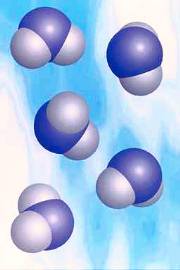25 October 2001
Ultrafast X-ray Could Reveal Atoms In Motion
by Kate Melville
 If you grew up in the 1950s you probably remember the fascination of seeing your own toes through the X-ray machines that could be found in many shoe stores.
If you grew up in the 1950s you probably remember the fascination of seeing your own toes through the X-ray machines that could be found in many shoe stores.
While concerns about radiation exposure have sent those old imaging devices to the scrap heap, the useful X-ray is still very much with us in dentist offices, in hospitals, in observatories where astronomers use X-rays to probe outer space, and in laboratories.
X-rays are already being used in many fields, from biology to materials science, to study the microscopic structure of matter. Now a group of researchers from the University of Michigan Department of Physics and its new Center for Optical Coherent and Ultrafast Science (FOCUS) have demonstrated an ultrafast switch for X-rays. The switch will enable the researchers to follow the movement of constituent atoms, and actually obtain information about the dynamics of molecular motion.
The results of their research will be published in the Oct. 25 issue of Nature. Authors of the paper include Matthew F. DeCamp, David A. Reis, Philip H. Bucksbaum, John M. Caraher, Roy Clarke, Eric M. Dufresne, Roberto Merlin, Vladimir A. Stoica, and Jared K. Wahlstrand, all of the U-M. Co-authors included Bernhard Adams, from Argonne National Laboratories, and Charles Conover of Colby College.
The U-M researchers used an ultrafast laser source, which acts as a hammer on the surface of a crystal, generating an acoustic pulse that is very short in both time and space. That pulse modifies the diffraction patterns through the crystal, and it can be used to switch energy from one diffracted beam to another.
In other words, it becomes an ultrafast shutter for X-rays, enabling them to capture motion within molecules just as a stop-action camera enables light to capture motion during a football game. But where sports photographers might be working with average shutter speeds of about a 500th of a second, the U-M physicists were achieving speeds of picoseconds (one trillionth of a second).
"If we can shutter X-rays very quickly, we have the potential to generate an ultrafast X-ray pulse that can be used to study the dynamics of very complex systems---essentially anything, like proteins, that can be made into a crystal," DeCamp says. He notes that the ultrafast pulses also could be used to study shock waves as they propagate through materials.
In a commentary on the article, Ferenc Krausz and Christian Spielmann of the Vienna University of Technology, say that the work "opens an entirely new chapter in controlling the time structure of hard X-rays." They add that while many challenges remain to be overcome, the "X-ray switch is a versatile tool that could be added to nearly every beam line without having to touch the source�such ultrafast switches could become a key component in the X-ray toolbox for probing the structural dynamics of matter."
